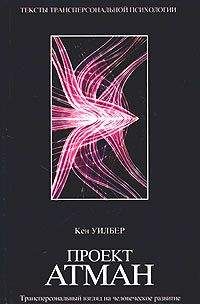[350]. Singh, K. Surat shabd yoga. Berkeley: Images Press, 1975.
[351]. Sivananda. Kundalini yoga. India: The Divine Life Society, 1971.
[352]. Smith, H. Forgotten truth. New York: Harper, 1976.
[353]. Smith, M. «Perspectives on selfhood». American Psychologist, vol.33, no.12, 1978.
[354]. Smuts, J. Holism and evolution. New York: Macmillan, 1926.
[355]. Snellgrove, D. The hevajra tantra. Part 1. London: Oxford Univ. Press, 1955.
[356]. Stiskin, N. Looking‑glass god. Autumn Press, 1972.
[357]. Straus, A. (ed). George Herbert Mead on social psychology. Chicago: Univ. of Chicago Press, 1964.
[358]. Sullivan, C, Grant, M. Q., and Grant, J. D. «The development of interpersonal maturity». Psychiatry, vol.20, 1957.
[359]. Sullivan, H. S. The interpersonal theory of psychiatry. New York: Norton, 1953.
[360]. Suzuki, D. T. Studies in Zen. New York: Delta, 1955.
[361]. Suzuki, D. T. Manual of ZenBuddhism. New York: Grove, 1960.
[362]. Suzuki, D. T. Studies in the Lankavatara Sutra. London: Routledge and Kegan‑Paul, 1968.
[363]. Suzuki, D. T. Mysticism: Christian andBuddhist. New York: Macmillan, 1969.
[364]. Suzuki, D. T. Essays in ZenBuddhism, 1st, 2nd, and 3rd Series. London: Rider, 1970.
[365]. Suzuki, D. T. The Zen doctrine of no‑mind. London: Rider, 1970.
[366]. Suzuki, D. T. Zen and Japanese culture. Princeton: Princeton Univ. Press, 1970.
[367]. Suzuki, D. T. Livingby Zen. London: Rider, 1972.
[368]. Suzuki, S. Zen mind, beginner''s mind. New York: Weatherhill, 1970.
[369]. Swearer, D. (ed). Secrets of the lotus. New York: Macmillan, 1971.
[370]. Taimni, I. K. The science of yoga. Wheaton: Quest, 1975.
[371]. Takakusu, J. The essentials ofBuddhist philosophy. Honolulu: Univ. of Hawaii, 1956.
[372]. Tart, C., ed. Altered states of consciousness. Garden City: Anchor, 1969.
[373]. Tart, C., ed. Transpersonal psychologies. New York: Harper, 1975.
[374]. Tattwananda, S. (trans). The quintessence of vedanta of Acharya Sankara. Calcutta: Sri Ramakrishna Ashrama, 1970.
[375]. Teilhard de Chardin. The future of man. New York: Harper, 1964.
[377]. Tillich, P. The courage tobe. New Haven: Yale, 1952.
[378]. Trungpa, C. Cutting through spiritual materialism. Berkeley: Shambhala, 1973.
[379]. Trungpa, C. The myth of freedom. Berkeley: Shambhala, 1976.
[380]. Vaughan, F. Awakening intuition. Garden City: Anchor, 1979.
[381]. Van Dussen, W. The natural depth in man. New York: Harper, 1972.
[382]. Waelder, R. Basic theory of psychoanalysis, New York: International Universities Press, 1960.
[383]. Walsh, R. Towards an ecology ofbrain. New York: Spectrum, 1979.
[384]. Walsh, R., and Shapiro, D. (eds).Beyond health and normality. New York: Van Nostrand Reinhold, 1978.
[385]. Walsh, R., and Vaughan, F., eds. Beyond ego psychology. Los Angeles: Tarcher.
[386]. Wapnick, K. «Mysticism and schizophrenia». Journal of Transpersonal Psychology, vol.1, 1969.
[387]. Warren, H. (trans).Buddhism in translation. New York: Athenum, 1970.
[388]. Wachburn, M. «Observations relevant to a unified theory of meditation». Journal of Transpersonal Psychology, vol.10, no.l, 1978.
[389]. Watts, A. The way of Zen. New York: Vintage, 1957.
[390]. Watts, A. Psychotherapy east and west. New York: Ballantine, 1969.
[391]. Wei Wu Wei. Posthumous pieces. Hong Kong: Hong Kong univ. Press, 1968.
[392]. Welwood, J. «Meditation and the unconscious». Journal of Transpersonal Psychology, vol.9, no.l, 1977.
[393]. Werner, H. Comparative psychology of mental development. New York: International Universities Press, 1957.
[394]. Werner, H. «The concept of development from a comparative and organismic point of view». Harris, ed. The concept of development. Minneapolis: Univ. of Minnesota, 1957.
[395]. Wescott, R. The divine animal. New York: Funk and Wagnalls, 1969.
[396]. White, J., ed. The highest state of consciousness. New York: Anchor, 1972.
[397]. White, J., ed. What is meditation? New York: Anchor, 1972.
[398]. White, J., ed. Kundalini, evolution, and enlightenment. New York: Anchor, 1979.
[399]. White, J., and Krippner, S., eds. Future science. New York: Anchor, 1979.
[400]. Whitehead, A. N. Modes of thought. New York: Macmillan, 1966.
[401]. Whitehead, A. N. Adventures of ideas. New York: Macmillan, 1967.
[402]. Whitehead, A. N. Science and the modern world. New York: Macmillan, 1967.
[403]. Whorf, B. L. Language thought and reality. Cambridge: M. I. T. press, 1956.
[404]. Whyte, L. L. The next development in man. New York: Mento, 1950.
[405]. Wilber, K. «The spectrum of consciousness». Main Currents, vol.31, no.2, 1974.
[406]. Wilber, K. «The perennial psychology». Human Dimensions, vol.4, no.2, vol.7, no.2, 1975.
[407]. Wilber, K. «Psychologia Perennis». Journal of Transpersonal Psychology, vol.7, no.2, 1975.
[408]. Wilber, K. «The ultimate state of consciousness». Journal of Altered States of Consciousness, vol.2, no.3, 1975–76.
[409]. Wilber, K. «The eternal moment». Science of Mind, June 1976.
[410]. Wilber, K. The spectrum of consciousness. Wheaton: Quest: 1977.
[411]. Wilber, K. «On dreaming: the other side of you». Foundation for Human Understanding, vol.1, no.l, 1978.
[412]. Wilber, K. «Microgeny». Re‑Vision, vol.1, no.3/4, 1978.
[413]. Wilber, K. «Projection». Foundation for Human Understanding, vol.1, no.2, 1078.
[414]. Wilber, K. «Some remarks on the papers delivered at the spirtual/transpersonal symposium». Annual meeting of the American Psychological Association, Toronto, 1978.
[415]. Wilber, K. «Transpersonal developmental psychology». Re‑Vision, vol.1, no.l, 1978.
[416]. Wilber, K. «The transpersonal dynamic of evolution». Re‑Vision, vol.1, no.2, 1978.
[417]. Wilber, K. «Where it was. I shallbecome». In Walsh and Shapiro, reference note # 384.
[418]. Wilber, K. «A working synthesis of transactional analysis and gestalt therapy». Psychotherapy: Theory, Research, and Practice, vol.15, no.l, 1978.
[419]. Wilber, K. «Are the chakras real?» In White, J. reference note # 398.
[420]. Wilber, K. «Development and transcendence». American Theosophist, may 1, 1979.
[421]. Wilber, K. «A developmental view of consciousness», Journal of Transpersonal Psychology, vol.11, no.l, 1979.
[422]. Wilber, K. Eye to eye — science and transpersonal psychology». Re‑Vision, vol.2, no. 1, 1979.
[423]. Wilber, K. «Heroes and cults». Vision Mound, vol.2, no.8, 1979.
[424]. Wilber, K. «Into the transpersonal». Re‑Vision, vol.2, no.l, 1979.
[425]. Wilber, K. «The master‑student relationship». Foundation for Human Understanding, vol.2, no.l, 1979.
[426]. Wilber, K. Noboundary. Los Angeles: Center Publications, 1979.
[427]. Wilber, K. Up from Eden. In submission.
[428]. Wittgenstein, L. Philosophical investigations. Oxford: Blackwell, 1953.
[429]. Wittgenstein, L. Tractatus Logico Philosophicus. London: Routledge and KeganPaul, 1969.
[430]. Woods, J. H. The yoga system of Patanjali. Delhi: Banarsidass, 1977.
[431]. Yampolsky, P., trans. The Zen Master Hakuin. New York: Columbia Univ. Press, 1971.
[432]. Yankelovich, K., andBarrett, W. Ego and instinct. New York: Vintage, 1971.
[433]. Yogananda, P. The science of religion. Los Angeles: Self‑Realization Fellowship, 1974.
[434]. Yogeshwarand Saraswati. Science of soul. India: Yoga Niketan, 1972.
[435]. Young, J. Z. Programs of thebrain. Oxford: Oxford Univ. Press, 1978.
[436]. Zilboorg, G. «Fear of death». Psychoanalytic Quarterly, vol.12, 1943.
[437]. Zimmer, H. Philosophies of India. London: Routledge and Kegan Paul, 1969.
Атман, так же как и Брахман — одно из ключевых понятий традиции индуизма. Атман — это запредельный Абсолют (Брахман) в человеке. При этом важно отметить, что Атман представляет собой не «часть» Брахмана, но неким парадоксальным образом тождественен целому Брахману. — Прим. ред.
ReVision: The Journal of consciousness and changes — один из основных журналов трансперсональной ориентации. Его редактором был вначале Кен Уилбер, а после него Станислав Гроф. — Прим. ред.
Кен Уилбер имеет в виду принципиальное отличие «доличностных» состояний ребенка и «надличностных» состояний, которые могут возникать только у зрелого человека, который сначала достиг личностной стадии развития, а затем в процессе своего духовного роста превзошел ее. Поэтому во всех традициях и говорится, что хотя святые и подобны детям, но они, конечно же, лишь подобны им. — Прим. ред.
«Уроборос» — мифический змей, свернутый в кольцо и пожирающий свой собственный хвост, образуя замкнутый круг, в котором нет дифференциации. Широко распространенный эзотерический символ. Подробнее понятие «уроборос» обсуждается ниже, в главе второй. — Прим. ред.
«Плерома» (греч.) — «полнота», «целостность». — Прим. ред.
Кентавр — мифологический персонаж, представляющий собой соединение человека и лошади. Здесь — символ единства тела и ума. — Прим. ред.
Тифон — по Уилберу, мифологическое существо, получеловек — полузмей. Подробнее символизм тифона обсуждается ниже, в главе третьей. — Прим. ред.
Каузальная (причинная) сфера — термин мистической космологии. Космологические учения различных мистических традиций различают несколько уровней (или сфер) бытия — от самого «грубого» материального уровня до все более «тонких» душевных и духовных уровней — эфирного, астрального, ментального, каузального и финального, которые, в свою очередь, могут подразделяться на более низкие и более высокие подуровни. Подробнее об этом см., например, в «Тайной Доктрине» Е. Блаватской. — Прим. ред.
Телеология (от греч. «телос» — «цель») — учение о том, что развитие, в данном случае развитие мира, предопределено изначально заданной целью. Телеономия — («телос» — «цель», «номос» — «закон») — учение о законах целеполагания. — Прим. ред.
Самость — психоаналитический термин, обозначающий самотождественность или содержание ощущения самого себя, своего внутреннего «Я», выступающего субъектом всего переживаемого опыта. В данном случае этот термин используется как бы в переносном смысле для обозначения всей совокупности переживаемого ребенком опыта, поскольку его «Я» (внутренний «субъект») еще не сформировалось. — Прим. ред.




